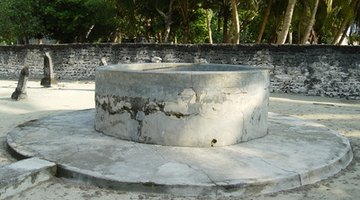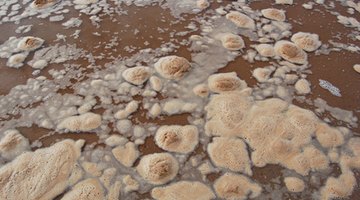A spring box to prevent contamination can be installed anywhere water seeps to the surface naturally. To harness your spring you can dig a hole where the water emerges from and then place a layer of gravel in the bottom for a filtered-earth holding tank. Most people, however, prefer to make more elaborate water-storage boxes for easy delivery systems using pipes, cement/rock dams and spring box holding tanks. It is always best if your water source is higher than your delivery location for pump- and electricity-free delivery.
- A spring box to prevent contamination can be installed anywhere water seeps to the surface naturally.
- To harness your spring you can dig a hole where the water emerges from and then place a layer of gravel in the bottom for a filtered-earth holding tank.

Build a trench and a rock/cement dam if your spring is on a slope. Build a spring box if your spring has a healthy flow. Make this box big enough to contain the eye of the spring; be sure it is open at the bottom or back if on a steep hill. Make this spring box a cube 1 yard by 1 yard by 1 yard. Layer gravel in the bottom of the spring box if it comes directly up out of this hole, as this helps filter the clean spring water.
Build the walls of the box, which should be no larger than necessary. Cover them with a removable top to permit cleaning inside. Use a larger pipe if it is positioned to drain off the water during construction of the box. Seal/remove this pipe when the project is finished. Use a smaller pipe large enough to handle any flow coming out of the spring once the box is in place. Build this into the box just above the "full" line for the box.
- Build the walls of the box, which should be no larger than necessary.
- Use a smaller pipe large enough to handle any flow coming out of the spring once the box is in place.

Prevent contamination of your spring by making a trench. Dig across the slope above the spring, so no surface water enters the system. Avoid pit latrines, dumps, defecating animals and other sources of contamination which should not be located up hill, above the source of the spring.
Choose another holding tank to insert into the spring hole if desired. Use plastic tanks, cement poured into wall forms and rock-mortared spring boxes, which are all common approaches that work.
TIP
It is always wise to have your water tested. Usually spring water is clean, yet sometimes the geology or contaminated soil can leak into your water.
